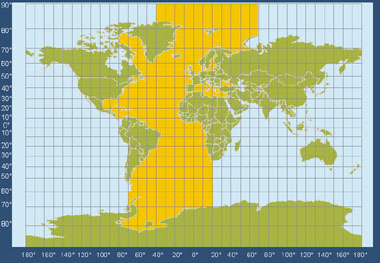 | Main function |  | |
The International Commission for the Conservation of Atlantic Tunas is responsible for the conservation of tunas and tuna-like species in the Atlantic Ocean and adjacent seas. About 30 species are of direct concern to ICCAT.  | Objectives |  | |
In order to carry out the objectives of the Convention the Commission is responsible for:- compiling fishery statistics from its members and from all entities fishing for these species in the Atlantic Ocean;
- coordinating research, including stock assessment, on behalf of its members;
- developing scientific-based management advice;
- providing a mechanism for contracting parties to agree on management measures; and
- producing relevant publications.
|
 | Convention Area |  | |
Atlantic Ocean and adjacent seas
INTERNATIONAL COMMISSION FOR THECONSERVATION OF ATLANTIC TUNAS  | Topic coverage |  | |
Fisheries Governance (Fisheries), Data Collection (Fisheries), Tuna and billfish catches (Fisheries), About 30 species are of direct concern to ICCAT:- Atlantic bluefin (Thunnus thynnus thynnus)
- yellowfin (Thunnus albacares)
- albacore (Thunnus alalunga)
- bigeye tuna (Thunnus obesus)
- swordfish (Xiphias gladius)
- billfishes such as white marlin (Tetrapturus albidus), blue marlin (Makaira nigricans), sailfish (Istiophorus albicans) and spearfish (Tetrapturus pfluegeri)
- mackerels such as spotted Spanish mackerel (Scomberomorus maculatus) and king mackerel (Scomberomorus cavalla)
- small tunas like skipjack (Katsuwonus pelamis), black skipjack (Euthynnus alletteratus), frigate tuna (Auxis thazard), and Atlantic bonito (Sarda sarda)
|
|
 | Legal Framework |  | |
Established by the International Convention for the Conservation of Atlantic Tunas, signed in Rio de Janeiro, on 14 May 1966 and entered into force on 21 March 1969. The Convention was amended in 1984 and 1992. |
| 









